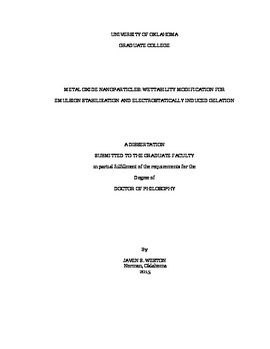| dc.description.abstract | Mixtures of fumed metal oxide nanoparticles (np’s) dispersed in water, at a solution pH where one species is positively charged and the other is negatively charged, form pseudo-solid gels at volume fractions as low as 1.5 vol %. The nanoparticles consist of spherical primary particles that have been sintered into rigid, fractal aggregates. When the two particle species are mixed at a range of volume fractions, they heteroaggregate to form a percolated, fluid-spanning structure due to electrostatic interactions. These gels exhibit a measurable yield stress and an apparent viscosity that follows a power law relationship with shear rate. This work characterizes the rheological properties, physical structure, and phase behavior for binary mixtures of fumed silica, fumed alumina, and fumed titania in aqueous dispersions. Gels were characterized at various particle concentrations, solution pHs, and mixture ratios. The strength of the gel network, as evaluated by the storage modulus and yield stress, appears to be maximized when the total negative surface charge on one type of particle is closely matched to the total positive surface charge on the opposite particle type.
Secondly, recent interest in the use of nanoparticles in emulsion stabilization has driven increased efforts to understand how the characteristics of the particles influence emulsion properties. While it is clear that contact angle and wettability must play significant roles in determining the type of emulsion formed, it is not straightforward to measure the contact angle of a nanoparticle. In this paper we compare multiple techniques for characterizing the water-air contact angle of silica nanoparticles while systematically varying the hydrophobicity of the nanoparticles using silanization. We then compare the performance of the particles in decane/water emulsions. While the heat of immersion measured by microcalorimetry is found to provide the best method for discriminating between the wettability of the particles, the fraction of surface covered by the silane groups was observed to affect the structure of the emulsion more profoundly than the differences in the contact angles of the particles. Furthermore, we find that the phase of initial dispersion is extremely influential in determining the resulting emultion type and droplet size. | en_US |
